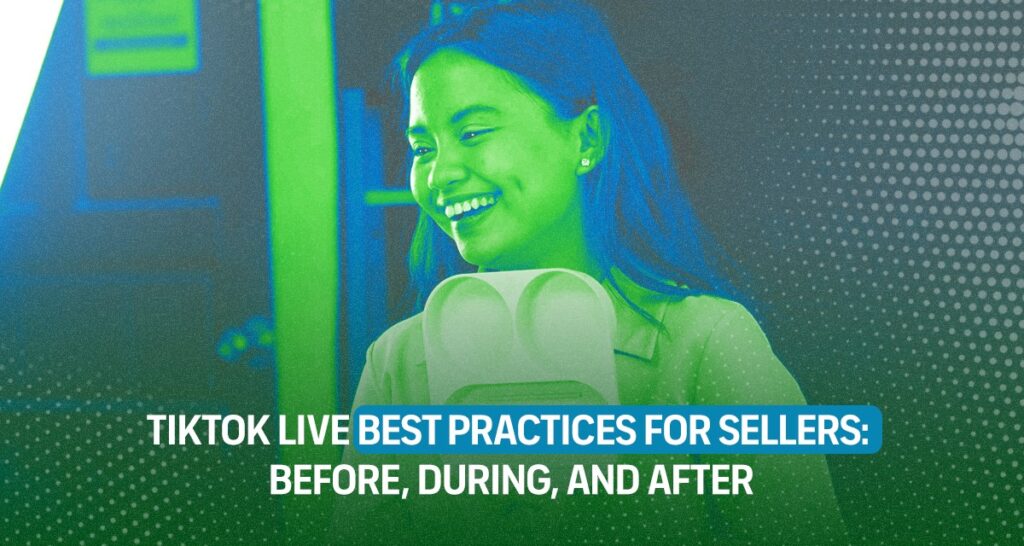Running ads for e-commerce is a great way to increase the brand’s visibility, create leads, and ultimately drive sales. But how sure are you that your e-commerce ad is working for you and not just wasting your ad budget?
Do you feel like your ad budget is draining away without enough sales to show for it? Well, you’re not alone!
According to the Association of National Advertisers (ANA), advertisers worldwide wasted $22 billion on programmatic ads.
What’s more, research suggests that the surge may not be stopping any time soon.
Statista Research Department revealed that wasted ad spending in 2024 is expected to increase, reaching 72 billion dollars globally from 54.63 billion in 2022.
We know that those numbers are alarming for you. However, this doesn’t have to be your e-commerce business reality! We created this ad performance improvement guide to keep your ad spending efficient and ensure your ads continue to deliver.
What Causes Ad Waste in E-commerce?

Wasted ads happen when the money spent on advertising campaigns doesn’t deliver profits or any other result to a business. This isn’t a new phenomenon. However, this is alarming for e-commerce businesses as wasted ad spending directly impacts their profitability.
To maximize your ad spend efficiency, let’s identify the biggest culprits behind advertising waste.
Ad Fraud
This is a type of digital marketing scam that involves fraudsters raising impressions, clicks, and conversion data for financial gain. This deceptive tactic means you’re paying for clicks that aren’t from real potential customers.
Worse yet, the skewed data makes it nearly impossible to optimize your campaigns effectively. It hinders your ability to reach your target audience and wastes valuable advertising budget.
A recent study by Juniper Research found a staggering 22% or $84 billion of all online ad spend in 2023 was lost to ad fraud, and this number is expected to skyrocket in the coming years. This is even more concerning for mobile advertising, where ad fraud is estimated to devour 30% of the budget.
Poor Targeting
Your poor ad targeting can also be the reason why your ads are not working for you. This is a common and very costly mistake in ad campaigns.
Targeting refinement is one of the most crucial steps that directly affect the result of your e-commerce ads. If your ads are reaching the wrong people, you’re essentially throwing money away.
A 2016 study by Nielsen’s Digital Ad Ratings found that a shocking 48% of all online ad budgets were wasted because they weren’t reaching the intended audience. The research was conducted only across France, Germany, Italy, and the UK. However, this already translates to billions of dollars in lost advertising spend globally.
Ad Blocking
Many internet users have installed ad blockers on their browsers. These programs prevent ads from displaying altogether, hindering your ability to reach potential customers.
Ad blocking is a growing concern not only for businesses that run ads but also for publishers. This practice has been steadily rising, estimated to cause $54 billion in ad revenue losses worldwide.
6 Ways To Avoid Wasted Ads Spend

Now that we have identified the most common reasons for wasted ads, it’s time to answer “How to stop wasting money on your ads?”.
Here are some ad optimization tactics to help you maximize your ad budget.
1. Be Clear with Your Ad Goals
It’s important to remember that stopping ad waste starts with setting clear goals. After all, you cannot measure success without a goal. So make your objectives crystal clear.
Of course, making sales is a crucial goal for every e-commerce business. However, when you’re launching new ad campaigns, focusing solely on sales might not be the most efficient approach.
We suggest keeping your eye on other aspects such as brand awareness, website traffic, and lead generation.
Align your ad goals with your overall marketing strategy. A good ad optimization tactic is to create specific, measurable, achievable, relevant, and time-bound (SMART) goals. Then as your campaigns progress, you can refine your goals and target more aggressive objectives like sales conversions.
2. Do an Audience Segmentation
Understanding your target market is important to avoid wasted ad spend and ensure the success of the campaign. An article published on the Harvard Business Review website mentioned that “digital targeting meaningfully improves the response to advertisements and that ad performance declines when marketers’ access to consumer data is reduced.”
Targeted campaigns deliver better results. One powerful targeting refinement strategy you can use is audience segmentation. This involves dividing your target audience into smaller groups with similar characteristics. You can segment based on demographics, interests, behavior, and intention.
By refining your audience targeting, you can tailor your messaging to resonate with each segment. This avoids casting a wide net and reaching uninterested users, ultimately saving you money and boosting campaign performance.
Additionally, by focusing your ads on a narrower, more qualified audience, you can potentially lower your costs and achieve a higher return on your ad spend.
3. Master Your Bidding Strategies
Setting up your Google Ads without a plan or data can drain your ad budget. For example, focusing on getting a high number of clicks can waste ad spend if you actually want to increase your e-commerce sales.
Let’s elaborate this: let’s say you’re e-commerce store sells power tools specifically for professionals.
A click from DIYers or hobbyists who are casually browsing for tools may not likely convert. To compare, prioritizing clicks from users actively researching specific power tools, like “best cordless drills for heavy-duty construction,” generates qualified leads with a higher chance of conversion.
As you can see, having the right bidding strategy can help you fight against wasted ad spend.
You can stick to the classic manual bidding to be in control, however, you need to keep in mind that this bidding strategy requires data, time, and skill.
Currently, Google promotes an automated bidding strategy. This type of bidding allows advertisers to save time and effort. However, you need to set it up correctly properly to get the result you need.
For instance, if your goal is to bring traffic to your store, you can choose a Cost-per-click or CPC bidding strategy. If you want to increase brand awareness, you can use cost-per-thousand viewable impressions or vCPM bidding.
Finally, if you want users to take action on your site, Google’s smart bidding is recommended. Under smart bidding, there are five more strategies: Target cost per action (CPA), Target return on ad spend (ROAS), Maximize Conversions, Maximize Conversion Value, and Enhanced cost per click (ECPC).
Understanding all these bidding strategies can be overwhelming for beginners. Thankfully, Google provides a helpful guide to determine the right bidding strategy for your needs. You can start there.
4. Add Negative Keywords in Your Ad Campaign
Once you’ve identified your target audience and segmented them effectively, you can further refine your targeting by leveraging negative keywords. These are specific words or phrases you add to your campaign to prevent your ads from showing to users searching for irrelevant terms.
Including negative keywords in your campaign is an effective way to stop or reduce your wasted ad spend.
For example, let’s say you sell high-end electric guitars. You might include negative keywords like “beginner guitar” or “budget-friendly guitar”. This way when someone searches for cheap guitars, your ads won’t appear to them. Doing this ensures your ad spend is focused on reaching serious guitarists who are more likely to convert into paying customers.
So, why do you do this? When you do not include negative keywords in your campaign, you’re showing your ads to a wider audience.
Sounds great, right? No! You only risk your ads being displayed to a broader audience, some of whom may not be interested in your products.
The result can be expensive clicks from irrelevant searches and ultimately, another wasted ad spend.
5. Try Retargeting
Retargeting also known as remarketing, refers to a digital marketing practice that involves repeatedly displaying your ads to users who have already shown interest in your products or brand.
For example, a user who has already added your product to their online cart but didn’t complete the purchase. By displaying your ads to them, you can remind them of your product and nudge them towards making a purchase.
Retargeting is not only an effective digital marketing strategy for e-commerce; it is also incredibly cost-effective. According to an article at Wordstream, display, and social remarketing ad clicks cost 2-100x less than search ads.
6. Do A/B Testing
As we previously mentioned, accurate data and reporting play a huge role in stopping wasted ad spend. So, how can you get this data for your Ad optimization tactics? Do an A/B test.
A/B testing in marketing is an experiment used to compare two versions of something to determine which one performs better.
A/B testing reveals which e-commerce ad variation performs better in achieving your goals. It is also a good targeting refinement strategy, making sure that you reach the right audience.
You can test different elements such as your headlines, CTA, visuals, keywords, demographics, promotions, devices, and even ad formats.
Keep in mind, however, to focus on “one” variable per test and maintain consistency in other elements. This is important to isolate the impact of the specific change you’re testing.
For example, let’s say you want to see if emphasizing free shipping in your ad headline improves click-through rates (CTR).
To do this you need to have two variations. First is your control group (A), which is your existing headline that doesn’t mention free shipping. The second is the challenger group (B), which has a new headline highlighting your free shipping promotion.
To get accurate data, make sure to use a comparable timeframe for both tested elements. That means if you launched your controlled element on a double-digit event, then you need to launch your challenger group on a double-digit sale too. Additionally, both campaigns should have the same length of time.
By analyzing both the ad CTR and the conversion rate on the landing page for each variation, you can gain a more holistic understanding of the impact of the free shipping message. But that’s not all, you can also use your winning variation for another AB testing. Here, the winning variation will be your control that will be tested for another variable.
Partner With Digital Marketing Company that specializes in E-commerce
By following the tips and strategies mentioned above, you can take control of your e-commerce advertising and see real results. Remember, wasted ad spend is preventable.
Still, lost in the world of e-commerce advertising? Let Be Global E-commerce Corporation help you. Our team of digital marketing experts specializes in helping e-commerce businesses like yours maximize the impact of their advertising efforts.
Contact us today and we’ll make sure every peso you spend on ads brings you the result you need.





